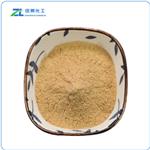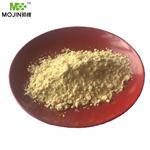Chemical Properties
yellow orange needles
Uses
Palladium(II) Acetylacetonate is an active anticancer agent. Exhibits growth inhibitory effect more than cisplatin in several cancer cells and treatment with Palladium(II) Acetylacetonate inhibits H460 cells. Palladium(II) Acetylacetonate is a catalyst for various organic transformations.
Uses
Palladium(II) acetylacetonate (Pd(acac)
2) was used in the following studies:
- Typical high-temperature organic solution phase protocol for the preparation of monodisperse CuPd alloy nanoparticles (NPs).
- Preparation of [(NHC)Pd(acac)L] (where L=Me, NHC = N-heterocyclic carbene) complexes. These complexes efficiently catalyze the Heck reaction of activated aryl bromides.
- As catalyst in the decarboxylative cross-coupling of arylcarboxylic acids with aryl halides.
General Description
Palladium(II) acetylacetonate (Pd(acac)
2) is a metal-organic complex. Sublimation of Pd(acac)
2 has been investigated by thermogravimetry and XRD. The temperature range for the sublimation of Pd(acac)
2, without undergoing thermal decomposition, was determined to be 100-160°C in the presence of inert gas helium.
Flammability and Explosibility
Highly flammable
reaction suitability
core: palladium
reaction type: Buchwald-Hartwig Cross Coupling Reaction
reaction type: Heck Reaction
reaction type: Hiyama Coupling
reaction type: Negishi Coupling
reaction type: Sonogashira Coupling
reaction type: Stille Coupling
reaction type: Suzuki-Miyaura Coupling
reagent type: catalyst
Purification Methods
It can be recrystallised from *C6H6/pet ether and sublimes in vacuo. It is soluble in heptane, *C6H6 (1.2% at 20o, 2.2 at 40o), toluene (0.56% at 20o, 1.4% at 40o) and acetylacetone (1.2% at 20o, 0.05% at 40o). [West & Riley J Inorg Nucl Chem 5 295 1957/8, Fernelius & Bryant Inorg Synth V 105 1957, Beilstein 1 IV 3676.]




